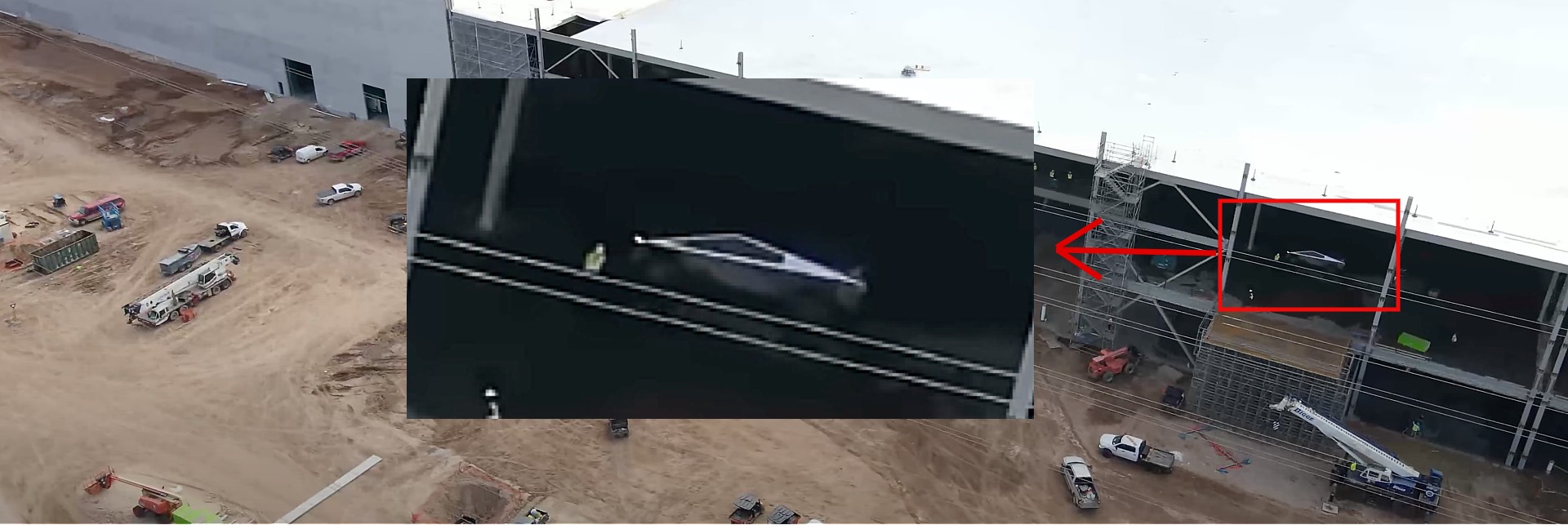
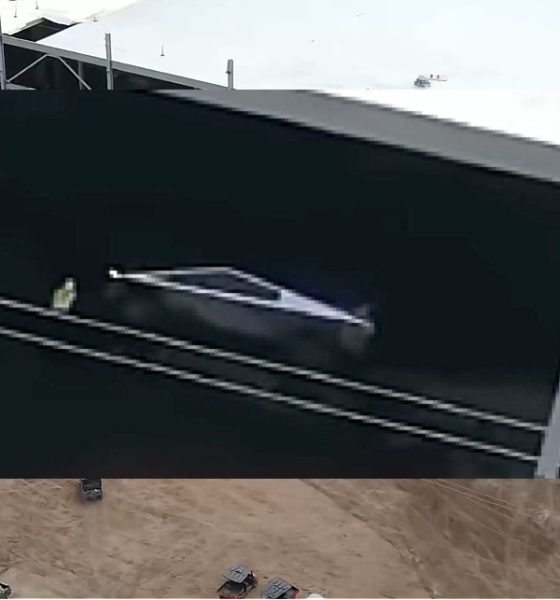
News
Home Sweet Home: Tesla discreetly places Cybertruck inside Giga Texas
Tesla is continuing construction at Giga Texas, and it appears that it has discreetly placed a future resident of the facility on the second floor: the Tesla Cybertruck.
Spotted in a new drone video from Terafactory Texas, the Cybertruck has been placed upstairs at the facility as construction continues to roll on in the plant that is located just outside Austin city limits. Following a brief appearance at the factory, the Elon Musk-commanded Cybertruck appeared at the plant in mid-April to give employees and workers on site a sneak peek at what the all-electric truck looks like in real life. It seemed that Tesla had then taken the Cybertruck off of the Texas property and transported it to New York, where it made an appearance at the Tesla Showroom located in the Meatpacking District of Manhattan at 860 Washington Street.
Elon Musk shares update on SNL appearance, says everyone is being friendly
While it is not known if this is the same prototype that graced Giga Texas employees a month ago, or if it is the same Cybertruck that rolled through the streets of Manhattan last weekend, the Cybertruck seems to be getting acclimated with its future digs as the truck will be produced at the Giga Texas factory when production begins. With plans to begin limited production by the end of 2021, the Cybertruck will be one of the first all-electric pickups on the market, likely following the R1T from Rivian, which is slated for deliveries in the coming months.
Since the Cybertruck’s dedicated unveiling event in November 2019, Musk has made several comments regarding the design, production processes, and overall build of the all-electric pickup. The most recent modifications that Musk announced had to deal with the vehicle’s dimensions. After noting that an anxiety-filled entrance into the Boring Company tunnel in Hawthorne, California, gave him concerns, Musk indicated that the truck would be smaller, but only by a fraction.
He said to Joe Rogan on an episode of the comedian’s podcast:
“That’s pretty much what it [the Cybertruck] will look like, with very small differences. You know, we adjusted the size a few percent. Like around 3% or smaller. You don’t want it to be a couple of inches too big for the tunnel.”
Additionally, Musk also indicated that the stainless steel alloy that is responsible for creating the truck’s “Exoskeleton” will also be subject to changes as new, more robust alloys are discovered. “We’re rapidly changing alloy constituents & forming methods, so traditional names like 304L will become more of an approximation,” Musk told Teslarati when commenting on an article regarding an upgraded Starship prototype in July 2020. Musk confirmed that the alloy changes would also come to the Cybertruck as well.
The Cybertruck was spotted on the second floor of the Giga Texas facility. Credit: Texas Terafactory | YouTube
The Cybertruck’s underside will also be manufactured with the use of an 8,000-tonne Giga Press from IDRA. Tesla uses the Giga Press to create single-piece castings of the Model Y crossover to increase structural rigidity and improve manufacturing efficiency.
While Cybertruck production is still several months away, Tesla has the truck stored at the facility that has been deemed the “Cybertruck factory” by some. Production of the Tri-Motor and Dual-Motor variants will begin first, with the Single-Motor configuration becoming available in late 2022 if all goes according to the company’s plan.
Check out Terafactory Texas’ video of the Cybertruck inside the factory below around the 7:10 mark.
https://youtu.be/3Qwp4cfsXpE

News
Tesla dominates in the UK with Model Y and Model 3 leading the way
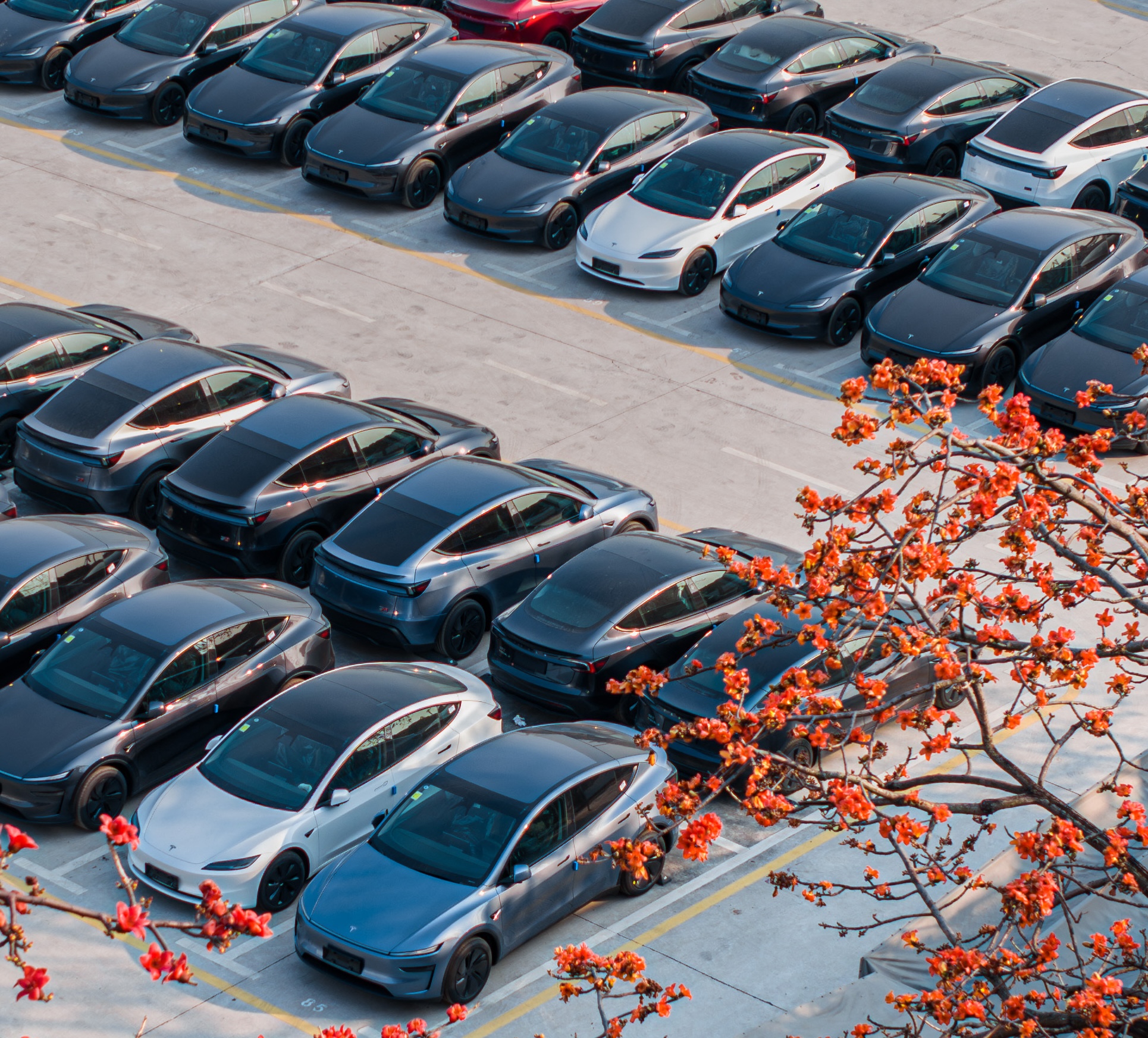
Tesla is dominating in the United Kingdom so far through 2025, and with about two weeks left in the year, the Model Y and Model 3 are leading the way.
The Model Y and Model 3 are the two best-selling electric vehicles in the United Kingdom, which is comprised of England, Scotland, Wales, and Northern Ireland, and it’s not particularly close.
According to data gathered by EU-EVs, the Model Y is sitting at 18,890 units for the year, while the Model 3 is slightly behind with 16,361 sales for the year so far.
The next best-selling EV is the Audi Q4 e-tron at 10,287 units, lagging significantly behind but ahead of other models like the BMW i4 and the Audi Q6 e-tron.
GOOD NEWS 🇬🇧 Tesla is absolutely crushing the UK electric vehicle market in 2025 💥
The numbers are in, and the dominance is clear. With an impressive amount of 42,270 vehicles delivered year-to-date, the brand now commands a solid 9.6% market share of the total auto market 🆒… pic.twitter.com/dkiGX9kzd0
— Ming (@tslaming) December 18, 2025
The Model Y has tasted significant success in the global market, but it has dominated in large markets like Europe and the United States.
For years, it’s been a car that has fit the bill of exactly what consumers need: a perfect combination of luxury, space, and sustainability.
Both vehicles are going to see decreases in sales compared to 2024; the Model Y was the best-selling car last year, but it sold 32,610 units in the UK. Meanwhile, the Model 3 had reached 17,272 units, which will keep it right on par with last year.
Tesla sold 50,090 units in the market last year, and it’s about 8,000 units shy of last year’s pace. It also had a stronger market share last year with 13.2 percent of the sales in the market. With two weeks left in 2025, Tesla has a 9.6 percent market share, leading Volkswagen with 8 percent.
The company likely felt some impact from CEO Elon Musk’s involvement with the Trump administration and, more specifically, his role with DOGE. However, it is worth mentioning that some months saw stronger consumer demand than others. For example, sales were up over 20 percent in February. A 14 percent increase followed this in June.
News
Tesla Insurance officially expands to new U.S. state
Tesla’s in-house Insurance program first launched back in late 2019, offering a new way to insure the vehicles that was potentially less expensive and could alleviate a lot of the issues people had with claims, as the company could assess and repair the damage itself.
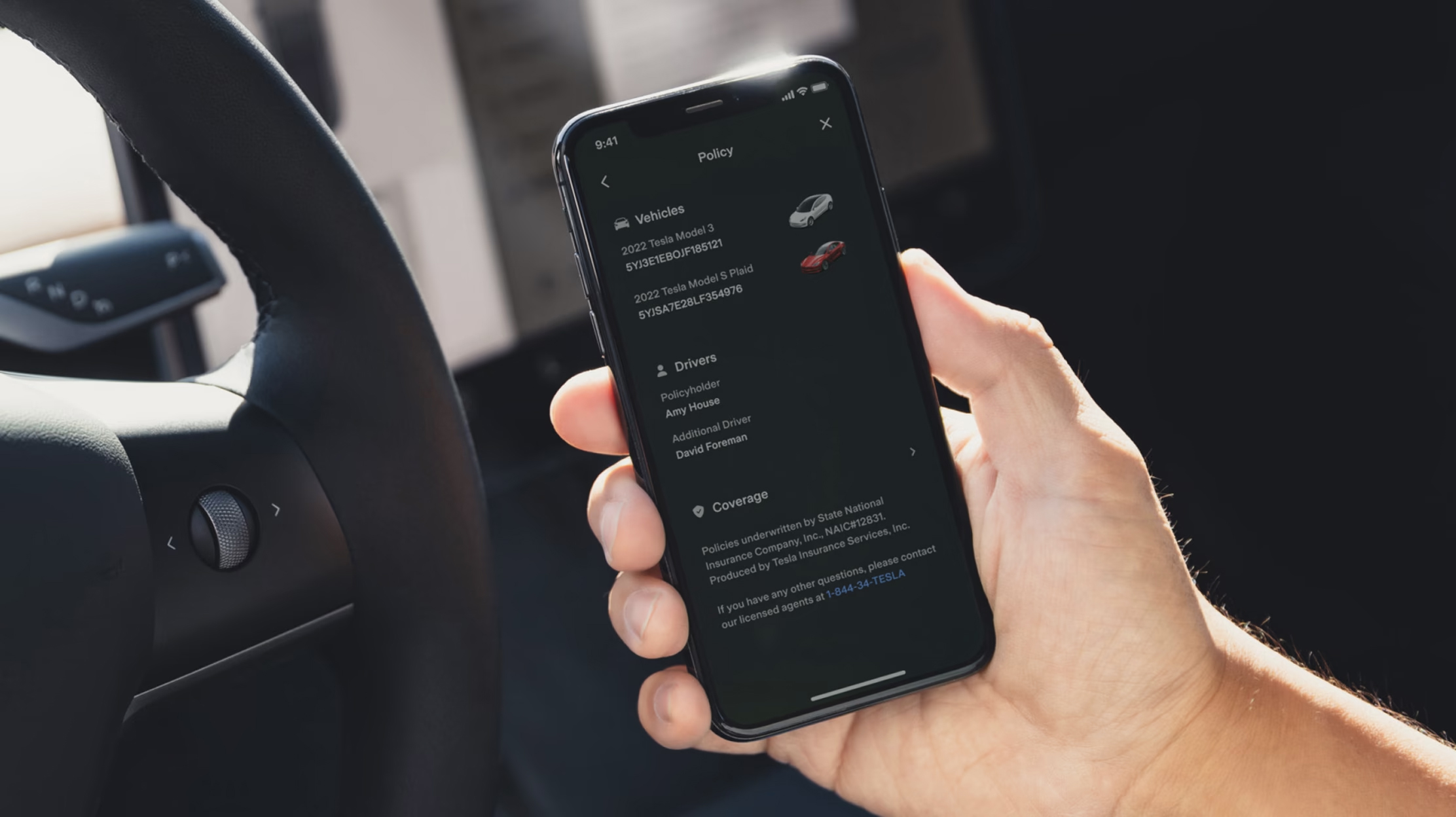
Tesla Insurance has officially expanded to a new U.S. state, its thirteenth since its launch in 2019.
Tesla has confirmed that its in-house Insurance program has officially made its way to Florida, just two months after the company filed to update its Private Passenger Auto program in the state. It had tried to offer its insurance program to drivers in the state back in 2022, but its launch did not happen.
Instead, Tesla refiled the paperwork back in mid-October, which essentially was the move toward initiating the offering this month.
BREAKING: Tesla Insurance has just officially launched in Florida.
This is the first new state to receive @Tesla Insurance in more than 3 years. In total, Tesla insurance is now available in 13 U.S. states (map in thread below of all the states).
Tesla Insurance in Florida uses… pic.twitter.com/bDwh1IV6gD
— Sawyer Merritt (@SawyerMerritt) December 17, 2025
Tesla’s in-house Insurance program first launched back in late 2019, offering a new way to insure the vehicles that was potentially less expensive and could alleviate a lot of the issues people had with claims, as the company could assess and repair the damage itself.
It has expanded to new states since 2019, but Florida presents a particularly interesting challenge for Tesla, as the company’s entry into the state is particularly noteworthy given its unique insurance landscape, characterized by high premiums due to frequent natural disasters, dense traffic, and a no-fault system.
Annual average premiums for Florida drivers hover around $4,000 per year, well above the national average. Tesla’s insurance program could disrupt this, especially for EV enthusiasts. The state’s growing EV adoption, fueled by incentives and infrastructure development, aligns perfectly with Tesla’s ecosystem.
Moreover, there are more ways to have cars repaired, and features like comprehensive coverage for battery damage and roadside assistance tailored to EVs address those common painpoints that owners have.
However, there are some challenges that still remain. Florida’s susceptibility to hurricanes raises questions about how Tesla will handle claims during disasters.
Looking ahead, Tesla’s expansion of its insurance program signals the company’s ambition to continue vertically integrating its services, including coverage of its vehicles. Reducing dependency on third-party insurers only makes things simpler for the company’s automotive division, as well as for its customers.
News
Tesla Full Self-Driving gets sparkling review from South Korean politician
“Having already ridden in an unmanned robotaxi, the novelty wasn’t as strong for me, but it drives just as well as most people do. It already feels like a completed technology, which gives me a lot to think about.”
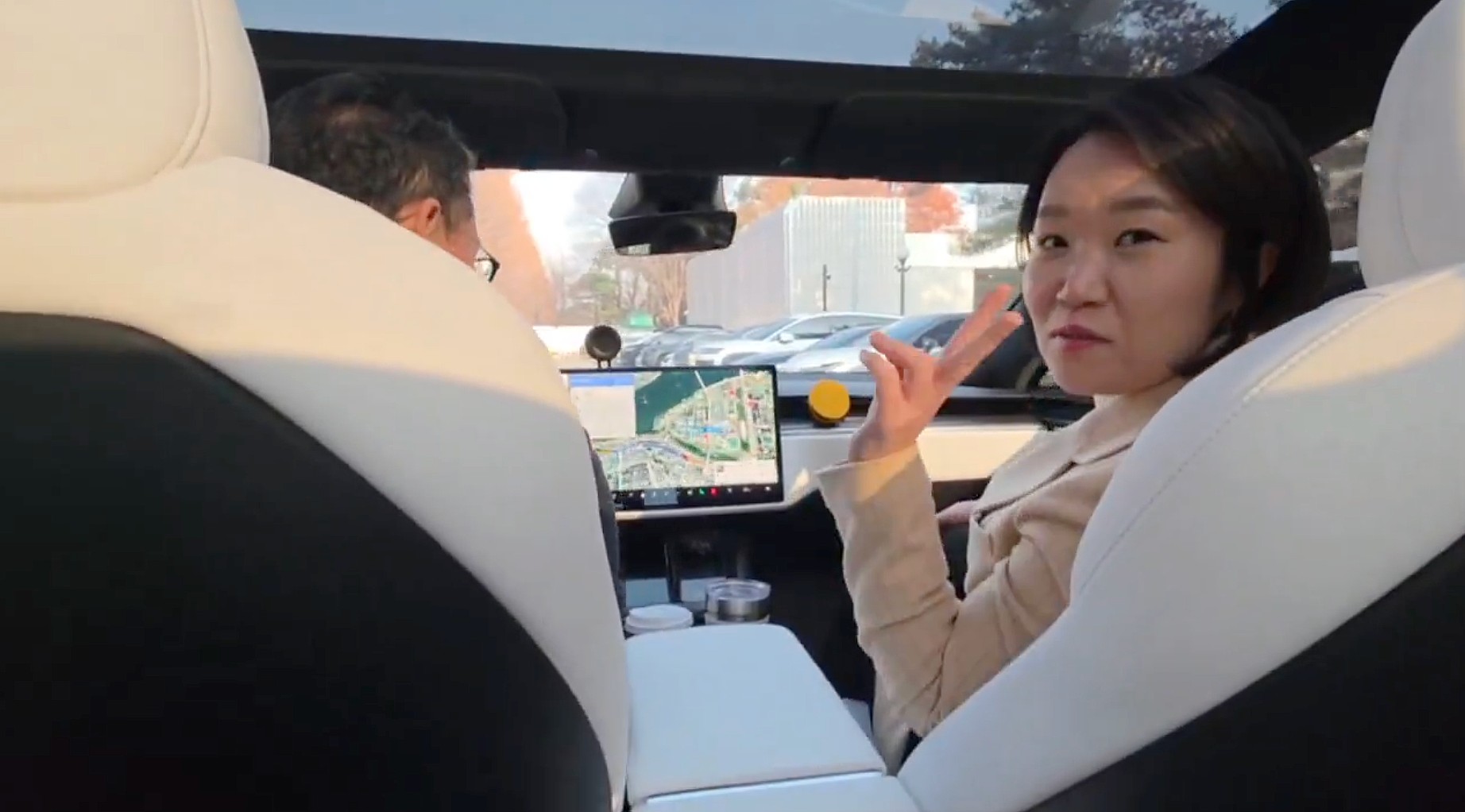
Tesla Full Self-Driving got its first sparkling review from South Korean politician Lee So-young, a member of the country’s National Assembly, earlier this week.
Lee is a member of the Strategy and Finance Committee in South Korea and is a proponent of sustainable technologies and their applications in both residential and commercial settings. For the first time, Lee was able to utilize Tesla’s Full Self-Driving technology as it launched in the country in late November.
Her thoughts on the suite were complimentary to the suite, stating that “it drives just as well as most people do,” and that “it already feels like a completed technology.”
드디어 오늘, 서울에서 테슬라 FSD 체험 했습니다.
JiDal Papa님의 모델S 협찬에 힘입어^^ 파파님 정말 감사합니다.
국회 -> 망원시장 -> 홍익대 -> 국회 복귀 코스였고요.
이미 무인 로보택시를 타봐서 그런지 신기함은
덜했지만, 웬만한 사람만큼 운전을 잘하네요.이미 완성된 기술이라고… pic.twitter.com/8pAidHBpRG
— 이소영 국회의원 (Soyoung Lee) (@im_soyounglee) December 17, 2025
Her translated post says:
“Finally, today I got to experience Tesla FSD in Seoul. Thanks to the Model S sponsored by JiDal Papa^^, I’m truly grateful to Papa. The route was from the National Assembly -> Mangwon Market -> Hongik University -> back to the National Assembly. Having already ridden in an unmanned robotaxi, the novelty wasn’t as strong for me, but it drives just as well as most people do. It already feels like a completed technology, which gives me a lot to think about. Once it actually spreads into widespread use, I feel like our daily lives are going to change a lot. Even I, with my license gathering dust in a drawer, don’t see much reason to learn to drive a manual anymore.”
Tesla Full Self-Driving officially landed in South Korea in late November, with the initial launch being one of Tesla’s most recent, v14.1.4.
It marked the seventh country in which Tesla was able to enable the driver assistance suite, following the United States, Puerto Rico, Canada, China, Mexico, Australia, and New Zealand.
It is important to see politicians and figures in power try new technologies, especially ones that are widely popular in other regions of the world and could potentially revolutionize how people travel globally.








